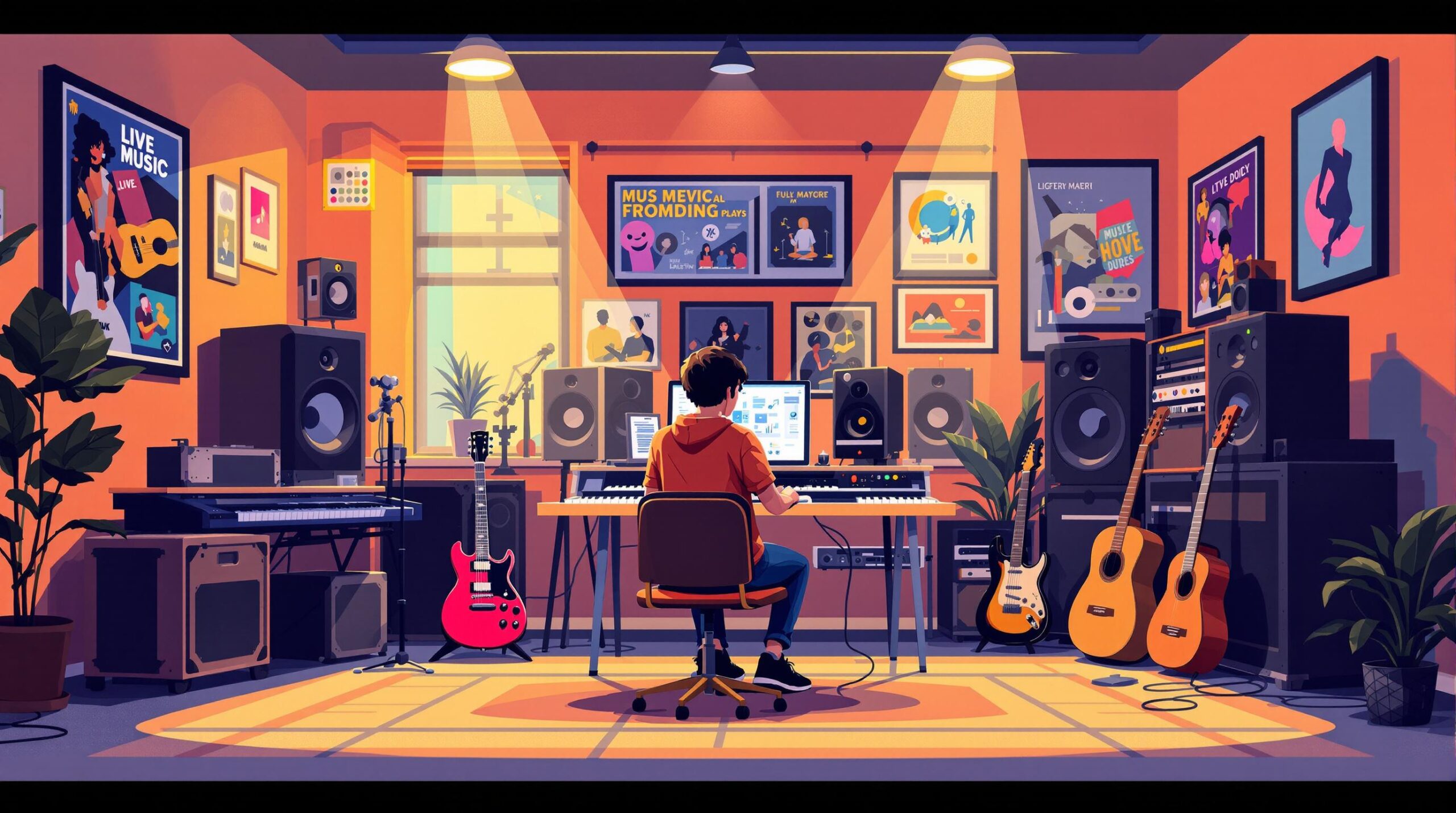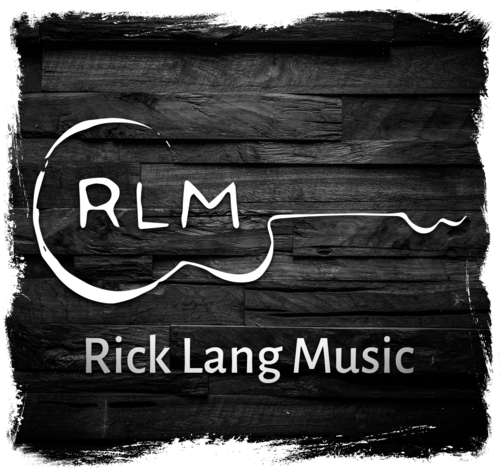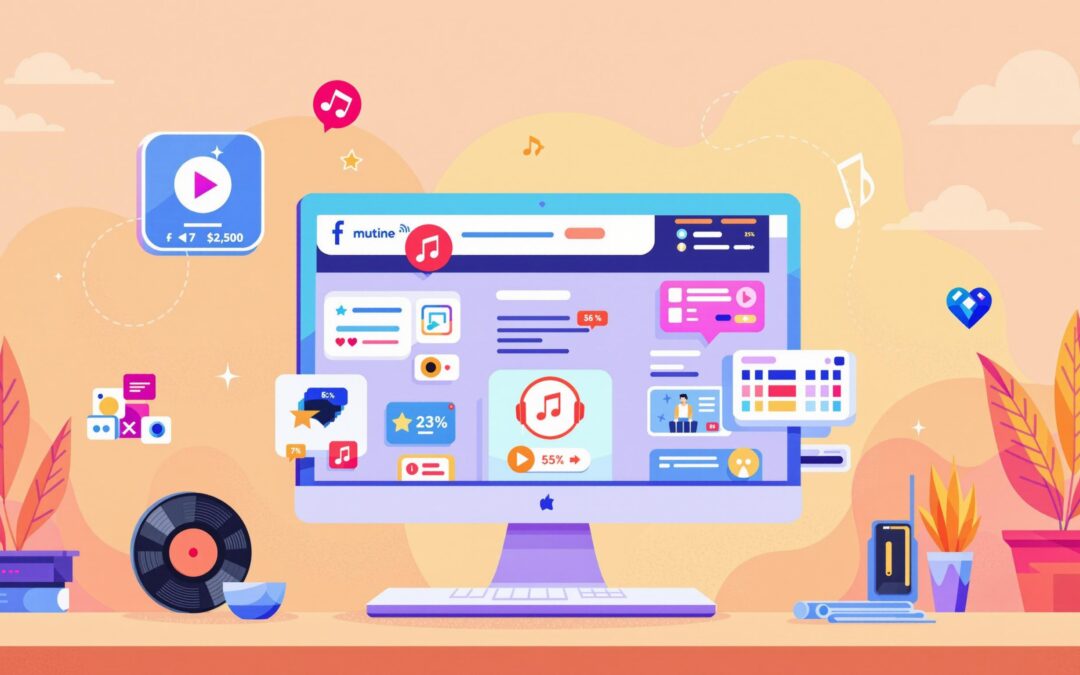Publishing your music ensures you earn royalties and protect your rights as an artist. Here’s a quick guide to get started:
- Copyright Your Music: Register your compositions and recordings to legally protect them.
- Join a PRO: Sign up with a Performing Rights Organization (e.g., ASCAP, BMI) to collect performance royalties.
- Choose a Distributor: Platforms like DistroKid, TuneCore, or CD Baby help release your music to streaming services.
- Prepare Your Music: Ensure your audio files meet technical standards and create professional artwork.
- Track and Promote: Use analytics tools to monitor performance and market your music through social media, playlists, and live shows.
Publishing involves managing composition and master rights, collecting royalties (performance, mechanical, sync), and distributing your music effectively. Follow these steps to make sure your hard work pays off.
Step 1: Music Copyright Basics
Music Copyright Explained
When you create music, it consists of two main parts:
- Composition: This includes the lyrics and the melody.
- Recording: This is the actual audio recording of the composition.
The moment you document or record your music, copyright protection kicks in automatically. This gives you exclusive rights to:
- Reproduce your work
- Distribute it
- Perform it publicly
- Create adaptations
- Control its digital performance online
Let’s walk through how to formally register your copyright for added protection.
Copyright Registration Steps
-
Choose the Right Registration Type
If you’re the sole creator and owner of both the composition and recording, you can register up to 20 songs for $85. -
Determine Your Song’s Status
- Unpublished: Songs hosted on platforms like YouTube, SoundCloud, or personal websites (as long as they aren’t downloadable).
- Published: Songs available for download on streaming services.
-
Register on copyright.gov
- Create an account with the Electronic Copyright Office (eCO).
- Select the appropriate category:
- "Sound Recording" for full ownership of both composition and recording.
- "Work of the Performing Arts" for composition rights only.
- Upload your files (MP3 format works best).
"The only way you can bring a suit against someone you think plagiarized your work is if you officially register the copyright with the US Copyright Office. So do it for your kids’ retirement!" – Ari Herstand
For works created after January 1, 1978, copyright protection lasts for the creator’s lifetime plus 70 years. For "works made for hire", protection lasts 120 years from creation or 95 years from first publication, whichever is shorter .
Step 2: Picking a Publishing Platform
Best Platforms for Solo Artists
Once your music is legally protected, the next step is deciding where to distribute it. Here’s a quick look at some top platforms:
- DistroKid: Offers unlimited releases for $22.99 per year, with 100% royalty retention, fast uploads, and payment splitting options .
- TuneCore: Priced at $14.99 per year for unlimited releases, it includes detailed analytics and distribution to over 150 digital stores.
- CD Baby: Charges $9.99 per single release, provides 91% royalty retention, and ensures permanent distribution.
Platform Selection Criteria
When picking a distributor, focus on these important factors:
| Criteria | What to Consider |
|---|---|
| Cost Structure | Compare annual subscriptions vs. per-release fees. |
| Royalty Split | Understand how much the distributor keeps. |
| Payment Speed | Check how often royalties are paid out. |
| Global Reach | Look for platforms with wide store and territory coverage. |
| Extra Features | Seek tools like analytics and marketing support. |
"What these stand-alone distributors offer that major labels and publishers do not is transparency and intelligible reports." – Ari Herstand
Key points to keep in mind:
- Cost Efficiency: Match the platform’s pricing model to your release frequency and budget. For frequent releases, annual plans like DistroKid may save money.
- Market Reach: If targeting specific regions, explore platforms like RouteNote, which connects with markets like China through NetEase.
- Features and Support: Look into tools like payment splitting, analytics, and the platform’s customer service reputation.
Pick a platform that fits your goals, starting with a basic plan if you’re just getting started. You can always upgrade later as your needs grow.
Once you’ve chosen your distributor, it’s time to prepare your release assets.
Step 3: Music Release Preparation
Audio Files and Metadata
Before releasing your music, make sure your audio files meet the technical requirements for professional distribution. Most platforms expect WAV files with these settings:
| Parameter | Required Setting |
|---|---|
| Sample Rate | 44.1 kHz |
| Bit Depth | 16-bit |
| Format | Stereo |
| File Type | WAV or FLAC |
Your recordings should meet these quality standards:
- Clear separation between instruments
- Professional mixing and mastering
- Free from interference, clipping, and with consistent volume levels
Once your audio is ready, focus on creating artwork that aligns with your music and meets distributor guidelines.
Album Artwork Design
Your album artwork needs to meet platform requirements such as:
- Minimum resolution of 1500 x 1500 pixels
- High-quality images with clean, appropriate content
- Minimal text (artist name, release title, featured artists)
- Use of authorized logos and websites only
To design effective artwork:
- Align the visual style with your music genre
- Use color schemes that evoke the right emotions
- Ensure text is readable, even at smaller sizes
- Check the clarity of your artwork across different sizes
With your audio and artwork ready, make sure all legal permissions are in place to protect your release.
Rights and Permissions
Securing the necessary rights and licenses is essential:
| License Type | Purpose |
|---|---|
| Mechanical License | For reproducing and distributing music |
| Synchronization License | For using music in visual media |
| Sample Clearance | For using parts of other recordings |
| Performance Rights | Managed through organizations like ASCAP or BMI |
Register your work with copyright offices to establish ownership. This provides legal protection and allows you to enforce your rights if someone infringes on them .
For collaborations, have written agreements with all contributors, including producers, session musicians, and featured artists. This ensures everyone is compensated fairly and avoids future disputes.
sbb-itb-1c6af30
Step 4: Distribution and Marketing
Platform Upload Guide
To release your music, choose a trusted distributor. For example, DistroKid ($22.99/year) can distribute your music to platforms like Spotify, Apple Music, Amazon Music, and TikTok . Here’s how to get started:
- Pick a distributor that meets your needs (e.g., DistroKid or TuneCore).
- Ensure your audio files and artwork meet the required technical standards.
- Upload your tracks, artwork, and metadata.
- Choose the streaming platforms you want to target.
- Plan a release date that aligns with your promotional efforts.
"The power to have total control over your distribution is priceless. DistroKid is the fastest and most efficient way to get your music out there!" – INJI
Sales and Stream Monitoring
Once your music is live, keep an eye on its performance using analytics tools from key platforms:
| Platform | Key Metrics Available |
|---|---|
| Spotify for Artists | Playlist additions, listener geography, real-time streams |
| Apple Music for Artists | Regional performance, playlist insights, royalty tracking |
| SoundCloud for Artists | Hourly streaming data, engagement stats |
| TuneCore Dashboard | Consolidated revenue across platforms |
For a broader analysis, tools like Chartmetric can help you evaluate your streaming performance and social media activity. This can guide you in refining your promotion strategies .
Marketing Your Music
With your music distributed and performance data in hand, use these strategies to promote it effectively:
Social Media Presence
- Post when your audience is most active.
- Share behind-the-scenes moments to connect with fans.
- Use popular hashtags to increase visibility.
- Interact with your followers to build engagement.
Email Marketing
Grow your mailing list by offering:
- Exclusive content.
- Sign-up forms on your website.
- Contests with targeted prizes.
- Early access to releases.
Playlist Promotion
- Submit your music to editorial playlists.
- Build connections with playlist curators.
- Create playlists that reflect your brand.
- Collaborate with other artists for cross-promotion.
Live Performance Marketing
- Design an engaging stage setup.
- Interact with your audience between songs.
- Sell merchandise at shows.
- Collect email addresses for future promotions.
"DistroKid is simply the best distributor in the market." – Jeff Price, founder of TuneCore and Audiam
How To Release Your Own Music AND ACTUALLY GET STREAMS!
Next Steps
Now that you’ve got a solid understanding of the basics of music publishing, it’s time to take action and set your release in motion.
Key Takeaways
Music publishing revolves around two main rights: composition rights (the notes and lyrics) and master rights (the actual recordings) . The main income sources include mechanical royalties, performance royalties, and synchronization fees.
Here’s what you need to focus on:
- Register your copyrights to protect your work legally.
- Sign up with a PRO (Performance Rights Organization) to collect performance royalties.
- Pick the right distribution platforms to get your music out there.
- Manage your rights effectively to avoid losing control over your work.
- Track and collect all revenue streams to ensure you’re paid for your efforts.
Helpful Tools
These tools can make your journey smoother:
Marketing and Promotion
- Show.co: Free marketing tools trusted by major labels.
- HearNow: Create a single landing page for all your releases.
- Laylo: Keep fans updated about new releases.
Rights Management
- Songtrust: Helps with global publishing royalty collection.
- Sentric: Offers administration services tailored for independent artists.
Action Plan
Here’s how to get started and stay on track:
Immediate Steps
- Document your music with recordings or sheet music .
- Register your work with the US Copyright Office (Form PA, $35 online filing) .
- Join a PRO to start collecting performance royalties .
Within the First Week
- Set up accounts on distribution platforms like Amuse or RouteNote .
- Use HearNow to create a landing page linking to your music.
- Start building an email list to connect with fans for future releases.
"DistroKid is simply the best distributor in the market." – Jeff Price, founder of TuneCore and Audiam



